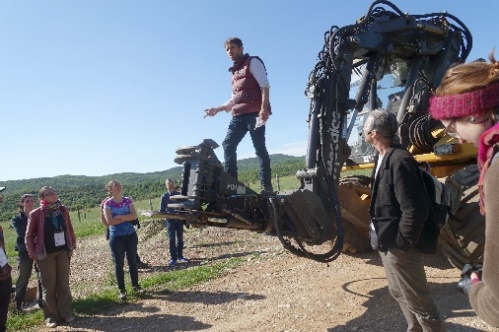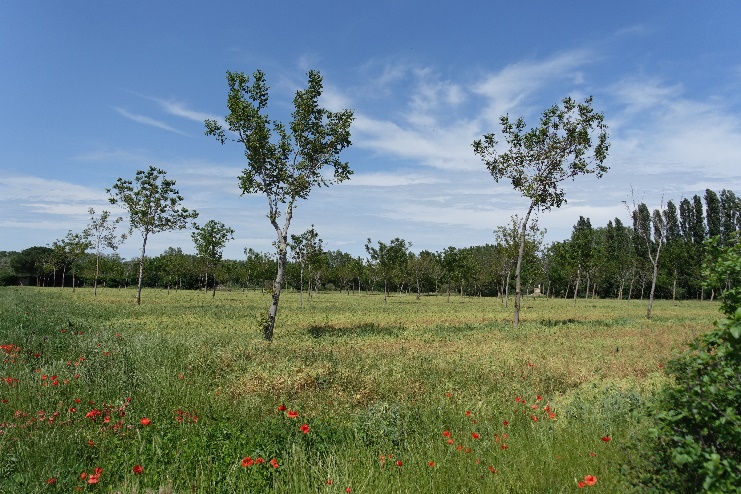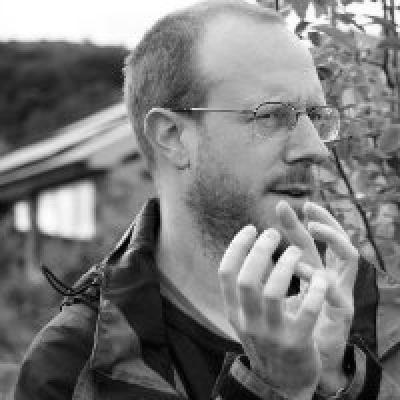EURAF: Celebrating agroforestry research in Europe
15 July 2016
 ©Pines and vines agroforestry, Restinclieres
©Pines and vines agroforestry, RestinclieresIn late May 250 delegates from as far away as China and Brazil, with a large contingent from France and Europe, gathered in Montpelier for the 2016 European Agroforestry Conference (EURAF). Research, practices and experiences were shared from academics and managers alike over a two day conference and one day tour. The conference began with an inspiring opening talk by Mark Shepard from Wisconsin USA, only briefly over-shadowed by the presence and address by Stephane Le Foll, the French Minister of Agriculture and an advocate of agroforestry.
Farm tours: the highlight of the event
If you have a farm or smallholding with secure tenure then trees can form a part of a diversification/integration programme. Trees can be used to offer protection for cash crops, pasture and livestock. They can provide additional income, provide habitat for beneficial wildlife, and form part of an integrated pest management (IPM) strategy. Trees help to supply fertility for soil and crops, as well as producing biomass for compost, heating and/or hot water. The possibilities are endless!
On the second day of the conference, we visited innovative farms across the region that have integrated agroforestry into their farming systems. These included: an example of silvopasture (wood pasture), silvoarable farming and an olive grove/market garden agroforestry system.
Integrated closed-loop wood pasture & biomass agroforestry
Perhaps the most innovative example was a 250ha mountain farm where they have developed a multi-stage system that capitalises on the value of low-grade woody biomass arising from scrub clearing. It is a win-win situation, they get paid to carry out the clearing work and then take a yield from each of the 3 subsequent stages. As well as sheep they keep 100 pigs on the farm, which historically were fed 80% from off-farm inputs (grain). 100 pigs require an area of 50ha of arable land in this area to keep them fed.
Historic over-grazing and mismanagement, followed by years of neglect, has meant that the upland landscape is dominated by box (Buxus sempervirens) under-storey growth that chokes canopy trees and shades out grasses and other valuable forages and wild flowers. Although it is a legal requirement in the area to control scrub, this farm with a group of 4 others has taken this work to a new level by mechanically clearing and harvesting the scrub and up-cycling it.
The harvested material is shredded and then sold as bedding for horses, or composted and used as a heat source for central heating in the farmhouse, then fed to beetle larvae for livestock fodder, and finally becomes a high grade 'worm compost' when the process is complete. In turn the clearance work opens up new glades within the existing wood pasture complex. These pastures are rich in species and provide diverse forage for sheep and pigs.
'Jean Pain' system in action
This farm is an excellent contemporary example of the 'Jean Pain' compost system. The farm have incorporated one of the patented chipper machines in their harvesting rig and count one of his family members amongst the design team.
The harvester unit is a beast of a machine, based around a giant pair of secateurs (or 'tree shears'), and modelled on the pincers of a beetle. The giant hydraulic arm is reminiscent of an elephants trunk. Mark Shepard commented, the machine is "doing what the mastodon used to do in the ecosystem", all the while making clearings for browsing and grazing animals to occupy. Eco-mimicry in action.

(Mechanical harvester unit. Photo credit: Niels Corfield)
The harvester yields around 1600m3 of biomass per year, with a fairly small fuel budget, since most of the work is done using hydraulics. Surplus biomass is arranged into large piles/windrows, roughly 100m3 in volume. As composting takes place the pile heats up to between 50 and 80oC. Water-filled IBCs are inserted into the pile and water from the farm house’s central heating system is circulated through the tanks, providing 50oC hot water for 6 to 12 months!
.jpg)
(Wood chip piles. Photo credit: Niels Corfield)
Insects as livestock feed
The icing on the cake for this system is the way that the partially composted wood chip is used as a feed stock for insect culture. This innovation is driven by a desire to make the best use of the woody biomass. Inspiration came from a simple question: what creature naturally actually eats wood chip? This, combined with observation and knowledge of the indigenous fauna, has led to the development of a truly sustainable (some might say permaculture) system.
.jpg)
(Beetle larvae. Photo credit: Niels Corfield)
Instead of being spread on beds as a soil conditioner/fertiliser, the partially composted wood chip is used to feed beetle larvae, that are fat, juicy and high in protein (over 20%). The larvae are then fed directly to pigs, replacing 60% of their grain ration. According to the farmer, 10 larvae are equivalent to 2kg of grain! And what's more, pigs self-ration when fed on larvae, rather than eating grain until the feeders are empty. Now the pigs are 80% fed from on-farm resources. This work is saving 50ha of grain land from another location, just by some clever thinking. After being ingested by the grubs, the residual compost is the most friable material, like high-grade worm castings.
A variation on this system would be to grow edible/medicinal mushroom using the woodchip. Either in grow rooms or in mulch beds, the latter would integrate well with market garden- or orchard systems. Both providing cash crop yield responses while boosting soil health and suppressing weeds.
Standard silvoarable alleycropping – hybrid walnut & cereals
The next farm we visited contains a large block of 10-year-old hybrid walnut and arable alley cropping plantings. Trees are planted in narrow strips of grass with arable rotations in the alleys. However, the trees were badly formed and harshly pruned. This illustrated the importance of farmer attention to the health and form of the trees in an agroforestry system. Since these trees are mostly destined for veneers the lack of straight trunks is perhaps less of a concern, compared to timber (saw log) applications for which they would be largely unsuitable or low value.

(Silvoarable system. Photo credit: Niels Corfield)
Troubleshooting
There was some discussion on the causes of the poor shape of the trees. The local agroforestry extension advisor pointed to the issue of strong and variable winds in their region. Ideas were offered by the group, and the efficacy of planted shelterbelts around the site was discussed. There was some concern from locals about the unpredictability of wind direction, and that shelterbelts are not widely utilised in this region, unlike the neighbouring Loire valley. That said there was much agreement in the group that shelterbelts would be an avenue worth investigating, particularly considering their use in established agroforestry systems in wind-prone regions, like the Mid-West US.
It was also pointed out that the planting lacks diversity, another key intent of agroforestry. It was suggested that one way to address these limitations would be planting a row of currants on the sunny side of the tree strip and a row of raspberries on the other. With sufficient clearance between the tree and shrub rows, this will facilitate easy mechanical harvesting.
It is always a pleasure to go on farm visits, and 'have a nose'. Seeing what people are doing on the ground is always the best way to learn. There's always more to ask and enquire, but never enough time. My thanks go to the organisers of the event and to the farmers for sharing their work and their time. I commend them for their commitment and passion in what they do. They are showing what can be achieved with trees and agroecology in practice.
Support for agroforestry
- The Woodland Trust offers advice as well as grants and funding to support the planting and protection of trees on-farm.
- Find Woodland Trust information resources on Agricology here.
Further information on French agroforestry (translated using Google translate)
- SAS Buxor (Insect Culture Farm)
- Market Garden agroforestry research project
- Agroforestry training and research
Videos & presentations from the conference
Niels Corfield is a consultant specialising in on-farm trees, soil improvement and integration. Contact: info@nielscorfield.com or @niels_corfield
Read the full version of the EURAF report here.

